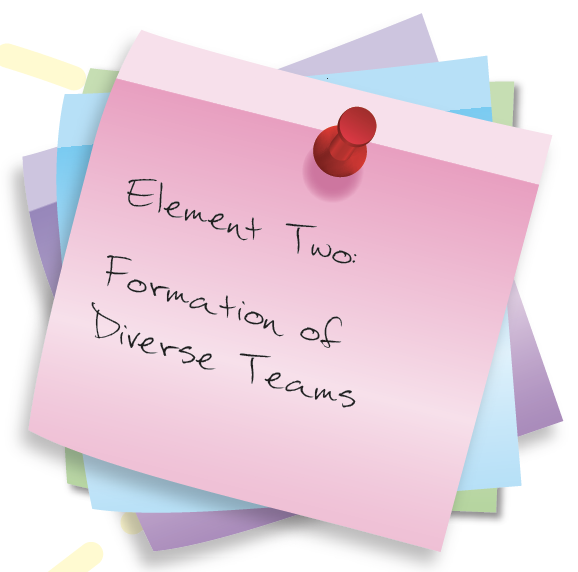
Element Two: Formation of Diverse Teams
creative solutions. Whether from customers, internal colleagues, or external networks, varied perspectives introduce new ways of looking at a problem—new ways that help produce novel insights and encourage redefinition of an initial, often simplistic, challenge.
What constitutes “diversity” in team formation remains an open question though it is clearly context dependent. System theorists talk about “requisite” variety in biology—that the assortment of potential responses must be equal to the complexity in the problem itself for successful adaptation. In other words, any solution space should contain as much variety as the problem space. Similarly, Peter Senge advocated that design required putting the whole system into the room.8 Since the repertoire of an innovation team influences the boundaries of likely possibilities, team composition is a critical element in ensuring requisite variety. What is clear is that narrow notions of demographic diversity such as age, gender, and race, while possibly important, are likely insufficient. Some have argued for cognitive diversity as a critical ingredient, while cross-functional representation on innovation teams has been proven critical in areas like new product development. Specifying the perfect composition of any team, however, is difficult before the problem is fully understood and reframed. The use of DESIGN THINKING tools, like stakeholder mapping, facilitate this.
Design thinking, however, is not synonymous with participative design. Co-creation plays a critical role at different points in the process, but it is not the ultimate end. Too many stakeholders, especially those unwilling to do time-consuming discovery work, can contribute to a lack of coherence in the innovation conversation and an inordinate focus on negotiating compromise rather than identifying higher-order solutions. One key to the design thinking approach is inviting intermittent team involvement by key stakeholders while still keeping the core design team small and manageable, and focused on data driven by analysis of user needs.




